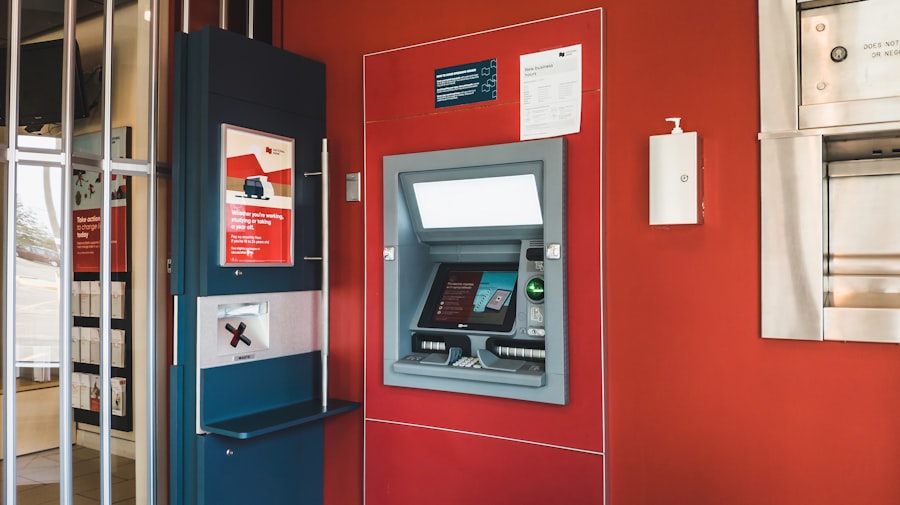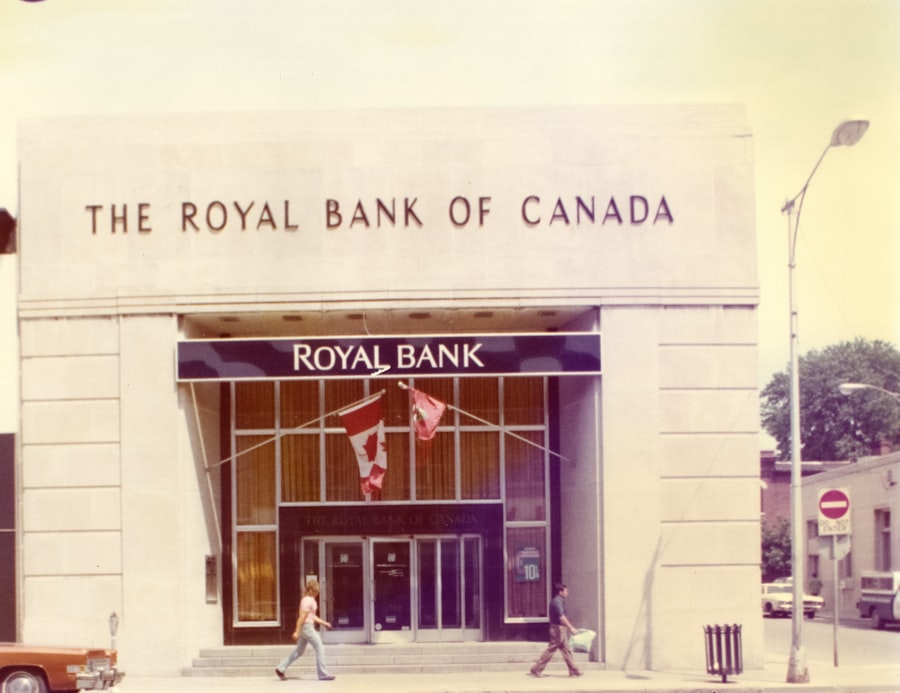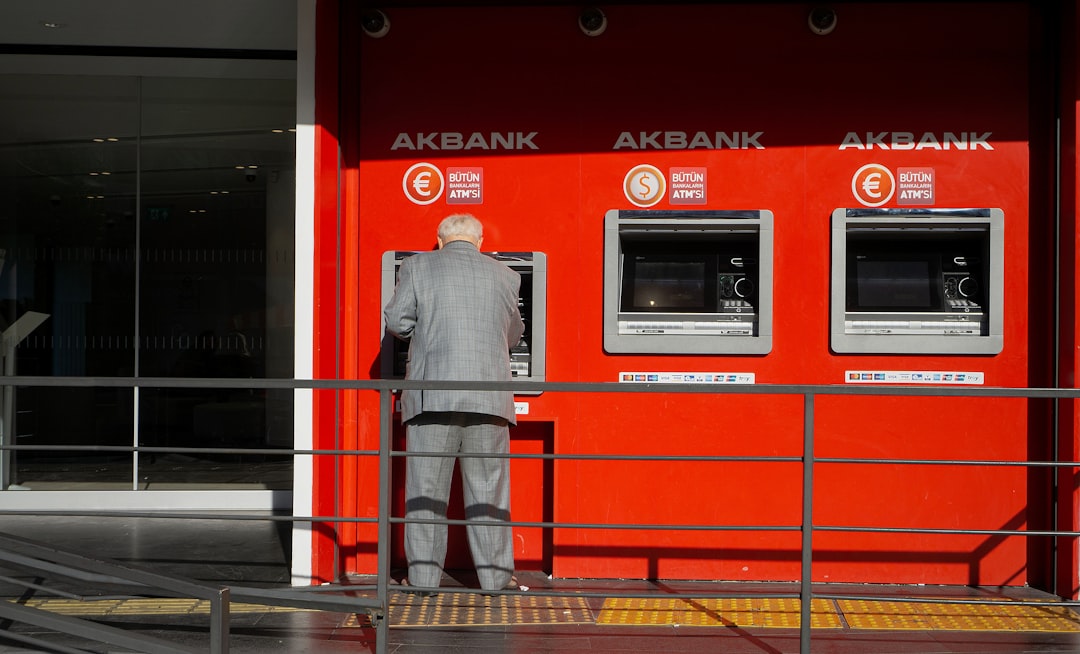When it comes to managing your finances, understanding the risks associated with banking is crucial. You may not realize it, but your money is not entirely safe just because it’s in a bank. Banks can face various challenges, including economic downturns, mismanagement, or even fraud.
These risks can lead to bank failures, which could jeopardize your hard-earned savings. It’s essential to be aware of these potential pitfalls so that you can take proactive steps to protect your assets. Moreover, the digital age has introduced new vulnerabilities.
Cybersecurity threats are on the rise, and banks are not immune to these attacks.
Identity theft and online fraud can occur if you’re not vigilant about your personal information.
Understanding these risks allows you to make informed decisions about where and how to store your money, ensuring that you take the necessary precautions to safeguard your financial future.
Key Takeaways
- Understanding the Risks
- Choose the Right Bank
- Diversify Your Accounts
- Monitor Your Bank’s Health
- Understand Deposit Insurance
Choosing the Right Bank
Selecting the right bank is a pivotal step in securing your financial well-being. You should consider various factors when making this decision, such as the bank’s reputation, services offered, and fees associated with accounts. A bank with a solid track record and positive customer reviews can provide you with peace of mind.
You may want to research online ratings and testimonials to gauge the experiences of other customers before committing to a financial institution. Additionally, think about the services that are most important to you. Do you need a bank that offers robust online banking features?
Or perhaps you value in-person customer service? Different banks cater to different needs, so it’s essential to align your choice with your personal preferences. By taking the time to evaluate your options carefully, you can choose a bank that not only meets your financial needs but also provides a sense of security.
Diversifying Your Accounts

Diversification is not just a strategy for investing; it’s also a smart approach when it comes to banking. By spreading your funds across multiple accounts or even different banks, you can mitigate risks associated with any single institution. This strategy can protect you from potential losses if one bank faces difficulties or if there are changes in interest rates that affect your savings.
You might consider opening accounts with different types of banks, such as traditional banks, credit unions, or online banks. Each type of institution has its own advantages and disadvantages, and by diversifying, you can take advantage of the best features each has to offer. For instance, online banks often provide higher interest rates on savings accounts due to lower overhead costs, while credit unions may offer more personalized service and lower fees.
By diversifying your accounts, you create a safety net that can help you weather financial storms.
Monitoring Your Bank’s Health
| Metrics | Definition |
|---|---|
| Capital Adequacy Ratio (CAR) | A measure of a bank’s capital in relation to its risk-weighted assets, used to protect depositors and promote the stability and efficiency of financial systems. |
| Non-Performing Loans (NPL) | Loans that are in default or close to being in default, indicating potential financial distress for the bank. |
| Net Interest Margin (NIM) | A measure of the difference between the interest income generated by banks and the amount of interest paid out to their lenders (for example, deposits), relative to the amount of their interest-earning assets. |
| Efficiency Ratio | A measure of a bank’s overhead as a percentage of its revenue, indicating its operational efficiency. |
Keeping an eye on your bank’s health is an essential part of managing your finances effectively. You should regularly check for updates on your bank’s financial status, including its capital ratios and overall stability. Many regulatory agencies publish reports on the health of financial institutions, which can provide valuable insights into how well your bank is performing.
In addition to official reports, pay attention to news articles and financial analyses that discuss your bank’s operations. If you notice any red flags—such as significant layoffs, changes in leadership, or negative press coverage—it may be time to reassess your relationship with that institution. By staying informed about your bank’s health, you can make timely decisions that protect your assets and ensure that your money remains secure.
Understanding Deposit Insurance
Deposit insurance is a critical component of banking that you should fully understand. In the United States, the Federal Deposit Insurance Corporation (FDIC) insures deposits up to $250,000 per depositor per insured bank. This means that even if your bank were to fail, your deposits would be protected up to this limit.
Familiarizing yourself with how deposit insurance works can give you confidence in the safety of your funds. However, it’s important to note that not all accounts are insured equally. For example, certain types of accounts or investments may not be covered by FDIC insurance.
You should take the time to read the fine print and understand what is and isn’t insured. This knowledge will empower you to make informed decisions about where to place your money and how much risk you are willing to take.
Maximizing FDIC Coverage

To fully benefit from FDIC insurance, you should consider strategies for maximizing your coverage. One effective way is to open accounts at multiple banks. Since FDIC insurance covers up to $250,000 per depositor per bank, spreading your funds across different institutions can significantly increase the amount of insured money you have.
This approach allows you to keep more of your savings protected while still enjoying the benefits of having funds readily accessible. Another strategy involves utilizing different account ownership categories. For instance, if you have joint accounts with another person, each account holder is insured up to $250,000 separately.
This means that a joint account could potentially provide up to $500,000 in coverage. By understanding these nuances of FDIC insurance, you can ensure that your savings are as secure as possible while maximizing the protection available to you.
Considering Alternative Options
While traditional banking options are widely used, it’s worth exploring alternative financial institutions that may offer unique benefits. Credit unions are one such option; they often provide lower fees and better interest rates compared to traditional banks because they operate as non-profit organizations owned by their members. If you’re looking for personalized service and community involvement, a credit union might be an excellent fit for you.
Additionally, online banks have gained popularity due to their competitive interest rates and lower fees. These institutions typically have lower overhead costs than brick-and-mortar banks, allowing them to pass those savings on to customers in the form of higher interest rates on savings accounts and lower fees for services. By considering these alternative options, you can find financial institutions that align better with your needs and goals.
Staying Informed about Economic Conditions
Being aware of broader economic conditions is essential for making informed banking decisions. Economic indicators such as inflation rates, unemployment figures, and interest rate trends can significantly impact your financial situation and the stability of banks. For instance, during periods of economic uncertainty or recession, banks may face increased risks that could affect their ability to safeguard deposits.
You should regularly follow financial news and analyses from reputable sources to stay updated on economic trends.
By staying informed about economic conditions, you position yourself to navigate potential challenges more effectively.
Taking Precautionary Measures
Taking precautionary measures is vital in safeguarding your finances against unforeseen circumstances. One effective strategy is maintaining an emergency fund that covers at least three to six months’ worth of living expenses. This fund should be kept in a liquid account that allows for easy access in case of emergencies or unexpected expenses.
Additionally, consider setting up alerts for your bank accounts to monitor transactions closely. Many banks offer mobile apps that allow you to receive notifications for large withdrawals or unusual activity. By being proactive about monitoring your accounts and maintaining an emergency fund, you can better prepare yourself for any financial challenges that may arise.
Seeking Professional Advice
Navigating the complexities of banking and finance can be overwhelming at times, which is why seeking professional advice can be beneficial. Financial advisors can provide personalized guidance tailored to your specific situation and goals. They can help you understand various banking products, investment options, and risk management strategies that align with your financial objectives.
When choosing a financial advisor, look for someone who is qualified and has a good reputation in the industry. You might want to ask for recommendations from friends or family or check online reviews before making a decision. By working with a professional who understands the intricacies of banking and finance, you can gain valuable insights that empower you to make informed choices about your money.
Being Prepared for the Worst Case Scenario
Finally, it’s essential to prepare for worst-case scenarios when it comes to banking and finances. While it’s not pleasant to think about potential disasters such as bank failures or economic crises, having a plan in place can help alleviate anxiety and ensure that you’re ready for any eventuality. Consider creating a comprehensive financial plan that outlines steps you’ll take in case of emergencies.
This plan might include diversifying your accounts across multiple banks, maintaining an emergency fund, and having a clear understanding of how deposit insurance works. Additionally, consider keeping important documents organized and easily accessible so that you can act quickly if needed. By being prepared for worst-case scenarios, you empower yourself with knowledge and strategies that can help protect your financial future even in challenging times.
In conclusion, navigating the world of banking requires diligence and awareness of various risks and strategies for safeguarding your finances. By understanding the risks involved, choosing the right bank, diversifying your accounts, monitoring your bank’s health, understanding deposit insurance, maximizing coverage, considering alternative options, staying informed about economic conditions, taking precautionary measures, seeking professional advice, and preparing for worst-case scenarios, you position yourself for greater financial security and peace of mind.
In today’s uncertain economic climate, safeguarding your bank deposits from potential financial collapse is more crucial than ever. One effective strategy is to diversify your assets and stay informed about the financial health of your banking institution. For more insights on how to protect your financial assets, you can explore this related article that delves into practical measures and expert advice on maintaining financial security. By staying proactive and informed, you can better navigate the complexities of the financial world and ensure the safety of your deposits.
WATCH THIS! The 8 Assets You OWN But the Government CONTROLS (Dollar Collapse Survival)
FAQs
What is a financial collapse?
A financial collapse refers to a situation where a country’s financial system experiences a severe downturn, often leading to a loss of confidence in the banking system and a potential collapse of financial institutions.
How can I protect my bank deposits from financial collapse?
One way to protect your bank deposits from financial collapse is to ensure that your deposits are covered by a government-backed deposit insurance scheme. In many countries, such as the United States, deposit insurance is provided by the government to protect depositors in the event of a bank failure.
What is deposit insurance?
Deposit insurance is a guarantee provided by a government or a designated agency that depositor’s funds in a bank will be protected up to a certain amount in the event of a bank failure.
How much of my bank deposits are typically covered by deposit insurance?
The amount of deposit insurance coverage varies by country, but in the United States, for example, the Federal Deposit Insurance Corporation (FDIC) provides coverage of up to $250,000 per depositor, per insured bank.
Are there any other ways to protect my bank deposits from financial collapse?
In addition to deposit insurance, diversifying your deposits across multiple banks and keeping an eye on the financial health of your bank can also help protect your deposits from financial collapse. It’s also important to stay informed about the stability of the financial system and the economy as a whole.
